Beefsteak Fungus / Summer / Autumn / Edible
Prepare to indulge in a culinary adventure like no other as we uncover the delectable wonders of the Beefsteak Fungus, scientifically known as Fistulina Hepatica.
In this blog post, we embark on a flavorful journey, celebrating the meaty textures and savory flavors that this edible fungus has to offer. Aptly named for its resemblance to a succulent cut of beef, the Beefsteak Fungus holds a place of honor among foragers and food enthusiasts alike. Join us as we delve into the characteristics, identification, and preparation techniques that bring out the best in this delectable fungi. From marinated grills to tantalizing stir-fries, the Beefsteak Fungus promises to elevate your culinary creations to new heights. Let’s savor the mouthwatering delights of Fistulina Hepatica, and discover the gastronomic pleasures that await those willing to explore nature’s edible treasures.
Scientific Name
Fistulina Hepatica
Family
Fistulinaceae
Habitat
Growing on dead or damaged oak often low down the trunk or stump
Description
A medium to large bracket fungus growing low down on dead oak and sweet chestnut that is red to pink on the top of the bracket with white pores underneath. the flesh is meaty and has white tubes or pores running through it making the flesh look like well marbled steak.
Identifying Features:
Cap:
Tongue shaped bracket fungus which gives it its french name the “langue de boeuf” or Cow tongue fungus. Red through to brown with a slimy or sticky cap top. Red with white ‘veins’ which resembles the marbling found in meat. the fungus drips a dark red liquid that looks a lot like blood.
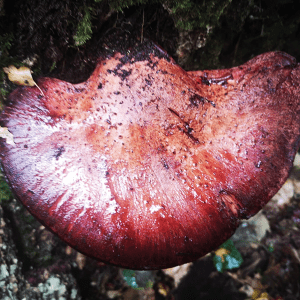
Stem:
The stem is not a true stem and is often just a smaller part of the cap that is protruding from the tree.
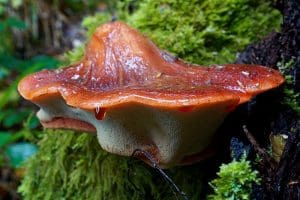
Pores:
Off-white to cream tiny round pores or tubules which bruise red/brown
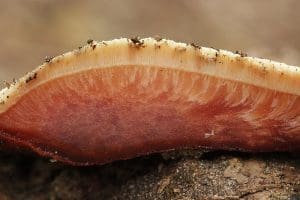
Smell:
Acidic, vinegary smell.
Spores:
Pink spores
Uses
Can be eaten as an excellent meat substitute as the look and consistency of this fungus is very much like beef.
In food
The Beefsteak fungus as its name suggests is an excellent meat substitute. it can be fried as is or can be sliced, floured and battered to make a chicken fried beefsteak fungus. it also takes a marinade really well and can be used in stir fry or stews! It can be eaten raw and can be added to summer salads where its sweet and acidic flavour compliments those salads well.
Harvesting
Found August through to October growing on dead Oak or Sweet chestnut low to the ground. The best thing to do is slice the edge away from the fungus leaving a little bit on the tree to allow it to potentially grow back
Known hazards
no known hazards
Potential lookalikes
There are no lookalikes for this fungus



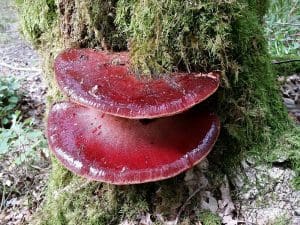
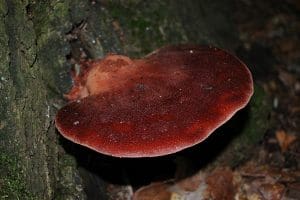
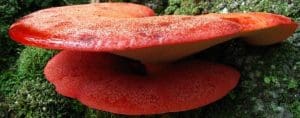
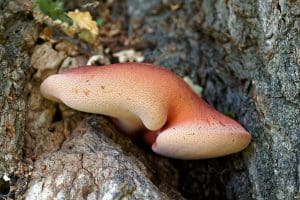
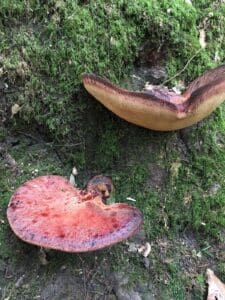
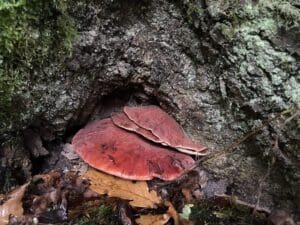



Leave a Reply
You must be logged in to post a comment.